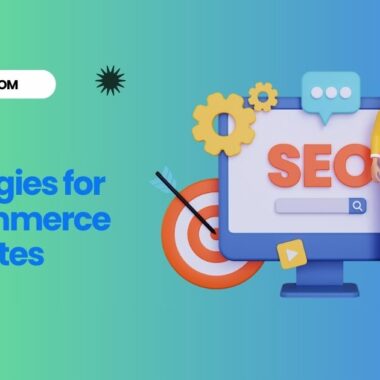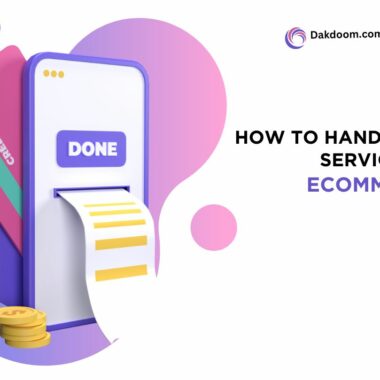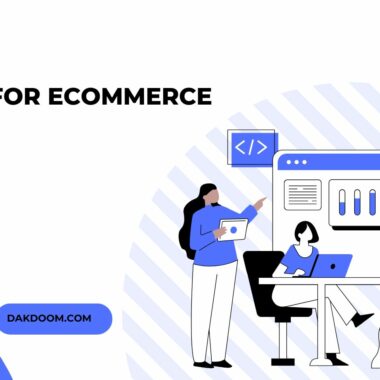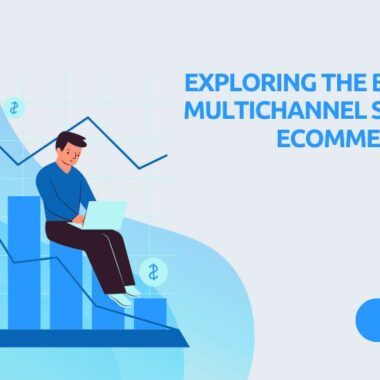The Future of Sustainability in eCommerce
Introduction
- Opening Statement: Briefly introduce the growing importance of sustainability in the eCommerce industry. Highlight how consumers are becoming more eco-conscious and how this shift is influencing business practices.
- Thesis Statement: Explore how sustainability will shape the future of eCommerce, focusing on innovative practices, consumer expectations, and technological advancements.

1. The Growing Importance of Sustainability
- Consumer Demand: Discuss the increasing consumer preference for sustainable products and brands. Include statistics and trends showing how eco-conscious buying behavior is on the rise.
- Regulatory Pressures: Outline the emerging regulations and standards that are pushing eCommerce businesses towards more sustainable practices.
2. Innovations Driving Sustainable eCommerce
- Eco-Friendly Packaging: Explore advancements in sustainable packaging materials and practices, such as biodegradable materials, reduced packaging, and reusable options.
- Green Logistics: Examine innovations in logistics, including electric delivery vehicles, optimized delivery routes, and carbon-neutral shipping options.
- Circular Economy Models: Discuss how eCommerce businesses are adopting circular economy principles, like product take-back schemes and recycling programs.
3. Technological Advancements Supporting Sustainability
- Artificial Intelligence: Analyze how AI is being used to enhance supply chain efficiency, reduce waste, and improve inventory management for better sustainability outcomes.
- Blockchain Technology: Detail how blockchain can increase transparency in supply chains, ensuring that products are ethically sourced and sustainably produced.
- Renewable Energy: Look at how eCommerce companies are integrating renewable energy sources into their operations, from data centers to warehouses.
4. Consumer Expectations and Behavior
- Transparency and Accountability: Discuss the increasing demand for transparency in product sourcing, manufacturing processes, and environmental impact. Highlight tools and certifications that help consumers make informed choices.
- Personalization and Ethical Choices: Examine how consumers are seeking personalized shopping experiences that align with their ethical values, including sustainable product recommendations and eco-friendly options.
5. Challenges and Solutions in Sustainable eCommerce
- Cost vs. Benefit: Address the perceived high costs of implementing sustainable practices and how businesses can balance these with long-term benefits.
- Supply Chain Complexity: Explore the complexities of transforming global supply chains to be more sustainable and discuss potential solutions, such as local sourcing and sustainable supplier partnerships.
6. Case Studies and Success Stories
- Leading Examples: Provide case studies of eCommerce companies that are successfully implementing sustainable practices. Highlight their strategies, achievements, and the impact on their business and the environment.
- Lessons Learned: Share key takeaways from these case studies that other eCommerce businesses can apply.
7. Future Outlook
- Emerging Trends: Predict future trends in sustainable eCommerce, including the potential for new technologies, evolving consumer preferences, and regulatory changes.
- Opportunities for Innovation: Discuss opportunities for innovation in sustainable eCommerce, such as new business models, technologies, and consumer engagement strategies.
In recent years, sustainability has become a central theme in consumer behavior and business practices alike. As eCommerce continues to grow at a rapid pace, the demand for environmentally and socially responsible practices is also on the rise. This blog explores the future of sustainability in eCommerce, focusing on how businesses are evolving, the technologies driving these changes, and the challenges they face.
8. The Growing Importance of Sustainability
Consumer Demand
The shift towards sustainability is not just a trend; it’s becoming a defining feature of modern consumer behavior. Studies show that:
- 76% of consumers are concerned about the environmental impact of their purchases.
- 66% are willing to pay more for products from brands that demonstrate a commitment to sustainability.
Brands like Patagonia and Tesla have set high standards, and their success reflects a broader shift in consumer expectations.
Regulatory Pressures
Governments around the world are enacting stricter environmental regulations:
- The European Union’s Green Deal aims to make Europe climate-neutral by 2050.
- California’s SB 54 requires companies to reduce single-use plastic packaging.
These regulations push businesses to adopt sustainable practices or face penalties and increased operational costs.
9. Innovations Driving Sustainable eCommerce
Eco-Friendly Packaging
- Biodegradable Materials: Companies are increasingly using materials that decompose naturally, such as plant-based plastics and mushroom packaging.
- Minimalist Design: Reducing excess packaging not only cuts waste but also lowers shipping costs.
Green Logistics
- Electric Vehicles: Brands like Amazon are investing in electric delivery vans to reduce carbon emissions.
- Optimized Routes: AI-driven logistics platforms are helping companies reduce fuel consumption and improve delivery efficiency.
Circular Economy Models
- Product Take-Back Programs: Companies like IKEA and H&M are implementing programs to recycle or repurpose old products.
- Refurbished Products: The market for refurbished electronics and goods is growing, with companies like Apple and Dell leading the way.
10. Technological Advancements Supporting Sustainability
Artificial Intelligence (AI)
- Predictive Analytics: AI can forecast demand more accurately, reducing overproduction and waste.
- Supply Chain Optimization: AI helps streamline supply chains, minimizing excess inventory and resource use.
Blockchain Technology
- Transparency: Blockchain provides a transparent ledger of every transaction, ensuring that products are ethically sourced and sustainably produced.
- Traceability: Consumers can trace the origin of their products, verifying claims of sustainability and ethical practices.
Renewable Energy
- Solar Power: Many eCommerce companies are investing in solar panels for their warehouses and data centers.
- Wind Energy: Wind turbines are being used to power operations, reducing reliance on fossil fuels.
11. Consumer Expectations and Behavior
Transparency and Accountability
Consumers are demanding greater transparency regarding:
- Product Origins: Information about sourcing and production processes.
- Environmental Impact: Details on the carbon footprint and ecological impact of products.
Personalization and Ethical Choices
- Sustainable Recommendations: AI-driven tools are suggesting eco-friendly alternatives based on consumer preferences.
- Ethical Product Listings: Features like eco-certification badges and sustainability scores are becoming common on eCommerce platforms.
12. Challenges and Solutions in Sustainable eCommerce
Cost vs. Benefit
- Initial Investment: Implementing sustainable practices can be costly, but long-term savings and benefits often outweigh the initial expenditure.
- Scaling Up: Small businesses may struggle to afford sustainable solutions, but collaborative initiatives and grants can help.
Supply Chain Complexity
- Global Supply Chains: Managing sustainability across complex international supply chains is challenging. Solutions include:
- Local Sourcing: Reducing transportation emissions by sourcing products closer to the point of sale.
- Supplier Collaboration: Working with suppliers to ensure they adhere to sustainability standards.
13. Case Studies and Success Stories
Leading Examples
- Patagonia: Known for its commitment to environmental activism and sustainable product lines.
- Unilever: Implementing comprehensive sustainability practices across its global supply chain.
Lessons Learned
- Transparency and Commitment: Brands that are open about their practices and committed to continuous improvement tend to build stronger customer loyalty.
14. Future Outlook
Emerging Trends
- Sustainable Innovation: Expect innovations in biodegradable materials, energy-efficient technologies, and eco-friendly logistics.
- Regulatory Evolution: More regions will likely adopt stringent sustainability regulations, influencing global eCommerce practices.
Opportunities for Innovation
- New Business Models: Subscription services for eco-friendly products and sharing economies are gaining traction.
- Consumer Engagement: Interactive platforms and gamification can enhance consumer engagement in sustainability initiatives.
Conclusion
Sustainability is not just a buzzword; it’s a fundamental shift in how businesses operate and consumers make purchasing decisions. The future of eCommerce will be shaped by innovations in technology, evolving consumer expectations, and the drive towards a more sustainable world. Businesses that embrace these changes and invest in sustainable practices will not only meet regulatory demands but also gain a competitive edge in a rapidly evolving market.
Additional Resources
- Links to Relevant Articles: Eco-Friendly Packaging Innovations, AI in Sustainable Logistics, Blockchain for Transparency
- Downloadable Guides: Sustainable eCommerce Checklist, Guide to Green Logistics











